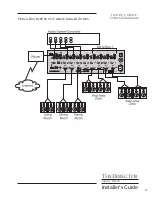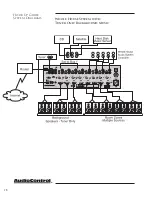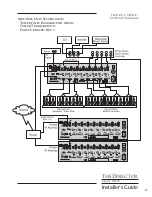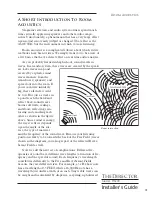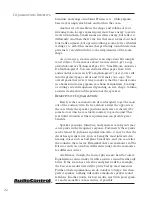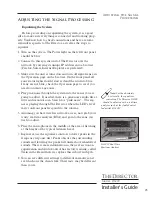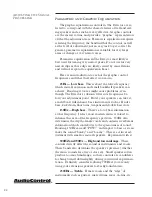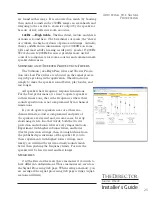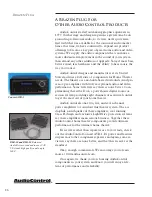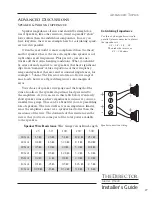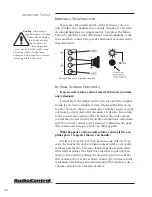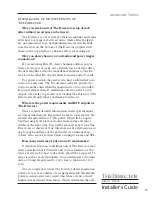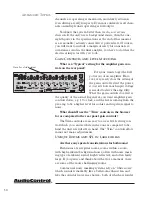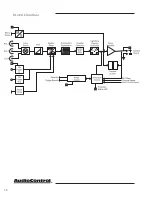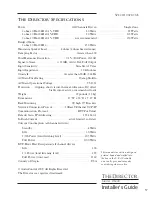
®
Equalization Benefits
furniture and gangs of indolent Persian cats…while gigantic
bass waves simply slosh back and forth in the room.
Another set of variables is the shape and volume of your
listening room. Large rooms require more bass energy to excite
waves within them. Small rooms need less energy, but reflect it
differently. And then there’s the fact that most rooms don’t have
four walls anymore, but open into dining rooms, lofts, cathedral
ceilings, etc. All of this means that predicting sound interaction
patterns is very difficult due to the irregularities of the room
shape.
As you can see, room acoustics is an important but compli-
cated subject. To learn more about room acoustics, get a copy
of AudioControl’s Technical Paper 107, “Small Room Acoustics
De-Mythologized”. You can download this paper from www.
audiocontrol.com (search “De-mythologized”) or if you’re still
into the printed page, call us and we’ll mail you a copy. The
overall point that we’re trying to make is that the various rooms
in a home function as gigantic mechanical equalizers, boosting
or cutting certain frequencies depending on size, shape, volume,
acoustic treatment and the position of the speakers.
Benefits of Equalization
Rarely is the room and room decor designed to get the most
out of the audio system. In fact, almost always the opposite is
the case where the speaker positions and sizes are dictated by
some factors which are actually contrary to good sound. This
real world situation is where equalization can provide great
benefits.
Speaker positions, furniture, and general room layouts may
cause peaks in the frequency response. Fortunately these peaks
can be tamed by judicious equalization. Also, it may be that the
client has specific tastes, such as being the most interested in
hearing voices such as ball game broadcasts, and you can tailor
the sound to these tastes. Remember there are memories in The
Director and you could use different settings via the memories
for different sources.
At all times, though, the laws of physics are hard to violate.
Equalization can not make terrible acoustics sound terrific only
better. If the room has a tile floor and glass walls for example,
the best case results will still be pretty bad by most measures.
Further, while equalization can do wonders to help a less than
perfect speaker, nothing will make a mediocre speaker sound
fabulous. In other words, for best results, start with good speak-
ers and reasonable room acoustics, if possible.
22










